Photo

Day twenty-six,
I noticed a few common themes throughout my time in the Netherlands and Belgium, including the destruction from world wars, Protestantism vs. Catholicism, immigration, colonialism, and the use of surrounding water. Both of these countries built their wealth by using the surrounding water to their advantage through transportation and trading. This abundance of water became a source of wealth for many cities in both of these countries.
Visiting churches was a big part of this trip and its interesting to me that a majority of the Dutch population is actually secular. This excess of churches has caused the Dutch to resort to creative ways to use these historical spaces instead of tearing them down. The religious history between the Protestants and Catholics shaped how people lived in the low countries, and this contentious history is one of the reasons why religious tolerance is ingrained within the Dutch identity.
We learned about the Dutch involvement in the first and second world wars and how German occupation changed the way many people lived in these areas. These wars destroyed historical buildings and monuments but the Dutch were able to stay strong and persistent. Im grateful for the discussions we had surrounding the dark history of Dutch colonialism in Africa and the Americas because the Dutch colonial empire spread far and wide and continues to impact the lives of those that were under its control. Those in Suriname, Congo, and Curacao still are heavily influenced by the Dutch language and culture that has persisted in these regions.
One of the experiences I’m most grateful for was going to our host Dominique’s house for dinner because we were able to see how a real Dutch family lives in the Flanders region. We took a walk through her neighborhood and ate a delicious authentic Dutch dinner, which is a very unique experience that most tourists wont get to have.
This study abroad program opened my eyes to the diverse and rich cultural history of the low countries. I’m forever grateful for the experiences and memories I have had on this trip!
Till next time,
Bri
0 notes
Photo




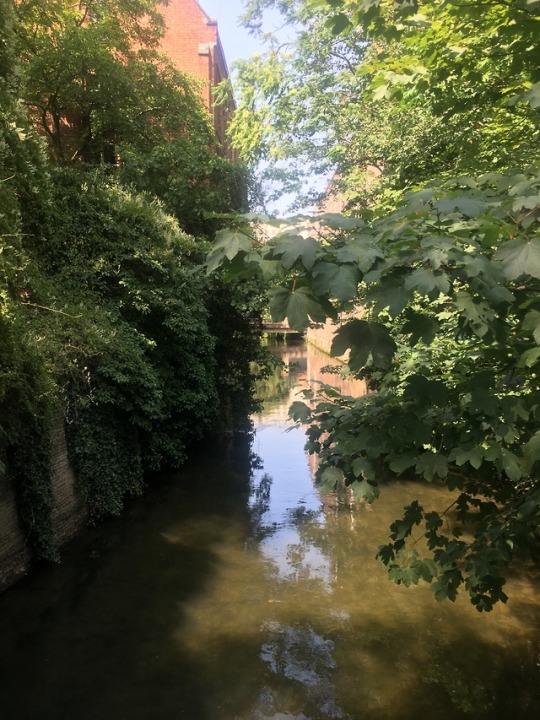

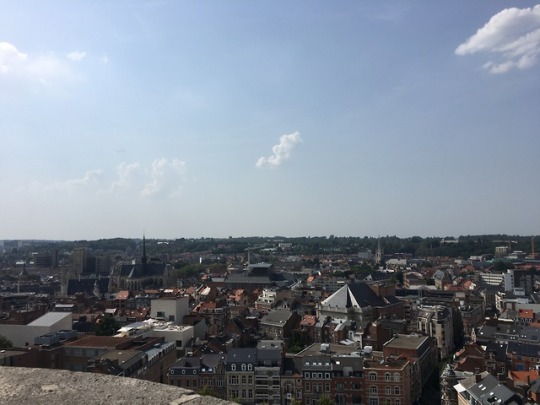

Day twenty-five,
Today we visited the city of Leuven. Leuven is known as a university town because it is home a 13th century university, one of the oldest in Europe. Most of the center of Leuven was destroyed in the first world war.
The most famous landmarks in Leuven are the city hall and library. The city hall was modeled after the city hall building in Brugge, and it still functions as it did in the 1300s in that people can still get married there. This building was very important because it housed the liberties of the city. The library has historical significance because it was destroyed by the Germans during the first world war. Many people viewed this as barbaric and the quote from inside the library stairwell showcases this. It reads “The fire of LEuven horrified people in Belgium and abroad. What disturbed people most was the destruction of the university library with its 300,000 volumes”. This fire started a worldwide humanitarian campaign to restore the library and provide books for the university. In front of this library is an art piece that has a dead beetle on a needle. The beetle symbolizes life and eternity while the needle represents science and the university. This art piece is a reflection on the dangers of science and how it can easily be misused to destroy nature.
The city of Leuven became rich from selling textiles and this allowed them to build a university. The university did not necessarily provide the most economic growth, but it did produce doctors, politicians, priests, etc. The university allowed them to be at the economic, political, and cultural center of the low countries since it attracted people from all over Europe.
We visited the St. Michaels Jesuit Church that is known as the prototype of baroque architecture. This is no longer a functioning church and it is one of the many excess churches in Belgium since a majority of the Belgian population no longer practices religion. There were paintings lining the walls of the church and from the picture above you can see that at the center of the altar is a painting. The following quote from the reader supports this notion that paintings are important to Baroque style architecture, “In contrast to the Gothic style, which is all soaring lines, pointing to heaven, the Baroque places man at the centre of the universe, making use of horizontal rather than vertical planes, and making painting the focal point for religious devotion” (p. 203).
We also had the chance to walk the stairs of the library up to the carillon and listen to bell player Marc van Eyke explain the history of the carillon in the low countries and play tunes from all over the world.
Till next time,
Bri
0 notes
Photo

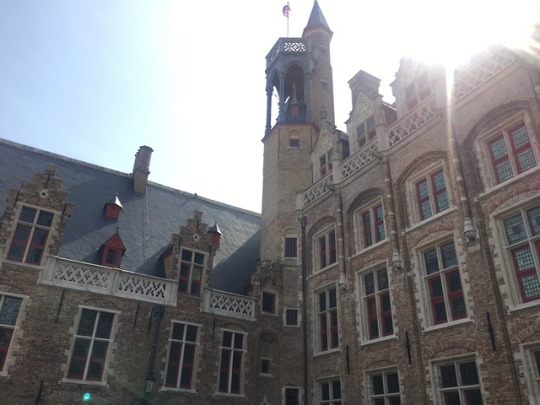
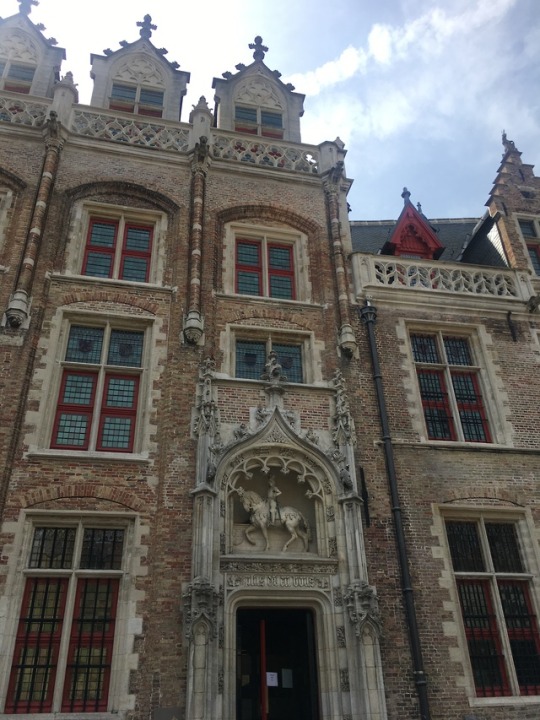
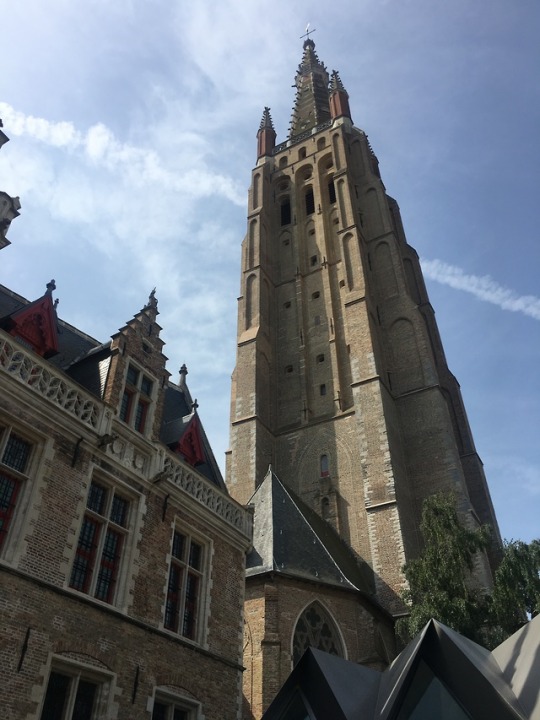

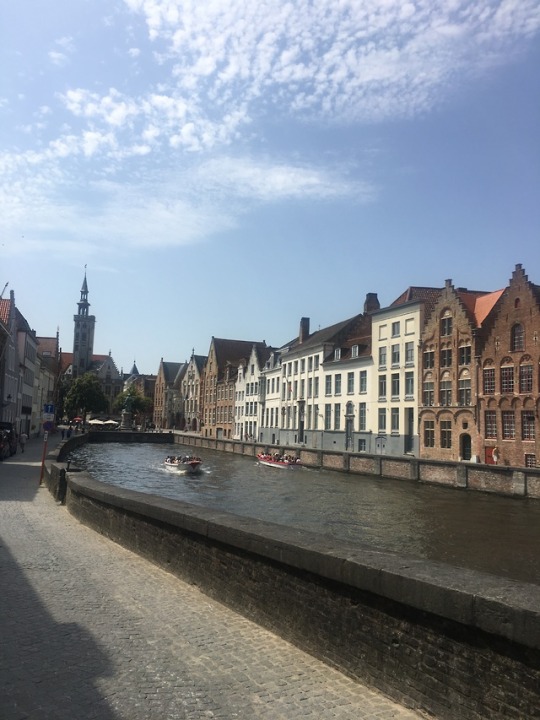
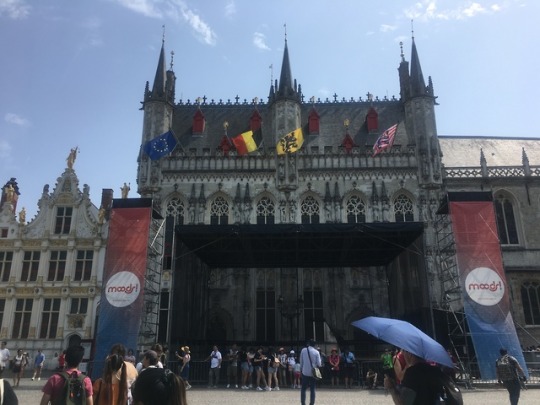

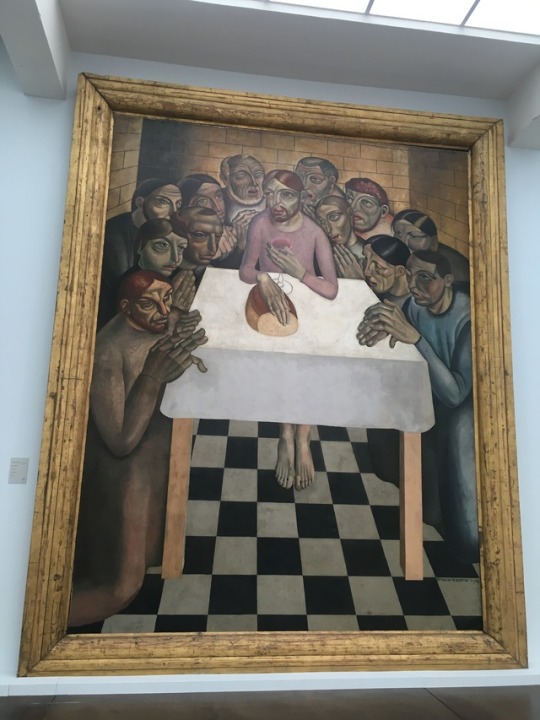
Day twenty-four,
We visited the city of Bruges today where we had a walking tour and museum visits. The reader says “Bruges has been variously called the ‘City of Swans’, the ‘Venice of the North’, and the ‘City in the Shape of a Reliquary’�� all of these descriptions appear to be somewhat truthful. We were able to see the swans at lovers lake, the relic in the basilica, and all of the canals with boat tours.
We saw the Begijnhof that historically housed older religious women in the community. The quote from the reader “These fully ordained nuns, many of them from overseas, live in the back of the Begijnhof away from the public gaze…” shows that these women lived independently from the rest of society during this time period (p.92)
We passed by the Gruuthuse museum where we learned that Louis de Gruuthuse had a monopoly on beer production and because beer was healthier than drinking water, he essentially had control over the city. He was able to accumulate an abundance of wealth from this and that allowed him to be able to build a big palace that even had his own chapel.
We then walked to the first ever stock exchange building. This building showed how the Low Countries, and Belgium in particular, played a big role in the production of what we now call the stock exchange.
Bruges has an economic center, political center, and industrial center. In the economic center lies the harbor of Bruges that brought wealth to the city. Near the harbor has historically been the most expensive place to live in this city. The Jan van Eyke statue was also in the economic center and this could be because he was the most well known painter from that area at the time. In the political center we were able to see the city hall building and a basilica.The industrial center has a history of textile production and authentic Belgian lace is still made there.
In the Groeninge museum we saw paintings by artists such as Jan van Eyke, Jheronimus Bosch, and even Rene Magritte. In the Flemish expressionism section of the museum there was a painting of people begging someone for bread and wine. This painting is a clear depiction of human nature in an alternative way.
Till next time,
Bri
0 notes
Photo




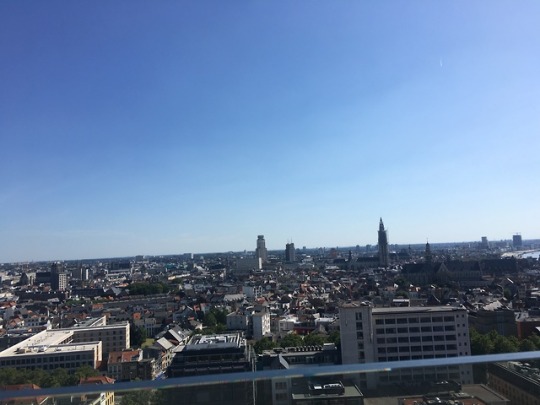
Day twenty-three,
The first thing I noticed about the city of Antwerp was the number of jewelers we passed by on the way to the city center. The reader says “Antwerp is first and foremost a trading city, the undisputed international diamond capital with 90 percent of the world’s uncut diamonds passing through” (p. 198). This quote helped to put into perspective why there were so many jewelers concentrated in one area.
Today we went to the Paul Rubens house that has now been turned into a museum. This museum houses a collection of his paintings as well as artists he has influenced. The most interesting painting to me was the unfinished landscape painting that depicted a battle scene with soldiers and horses. This painting allowed us to see his process and how he chooses to paint the background in detail before moving to the foreground. The quote from the reader “After Belgium became independent in 1830, Rubens became a national hero and symbol of renewed Belgian pride (p.202)”. This quote shows why Rubens is considered to be such an important figure in Belgian history.
We also visited the Our Lady Cathedral, and it is known as the most beautiful church in the Low countries. This cathedral is a gothic Catholic church turned into a museum, and it’s still has many of the typical characteristics of a Catholic church with stained glass windows, statues, paintings, and decorative ceilings. The quote from the reader “The Flemish developed their own style of Renaissance architecture with more colourful decorations, while retaining elements of the Gothic” describes this building (p. 195).The church also had a statue of Pocahontas because she represented America at the time.
We visited the archeology museum that had 8 floors dedicated to different time periods in history. There was an Indian/Pakistani exhibit depicting daily life in those countries, an exhibition celebrating pride month in Antwerp, a Dia De Los Muertos section and more. The museum even had a section on the influence of social media on today’s youth. There was a floor dedicated to the ideas about life and death within many religions and cultures and it was interesting to see artifacts and stories from other regions besides Christianity since most of this trip has focused on Protestantism and Catholicism.
Till next time,
Bri
0 notes
Photo


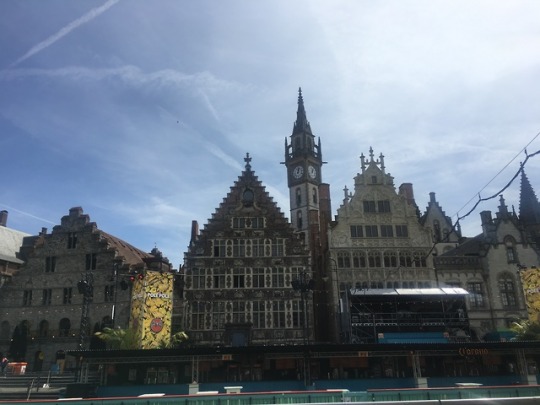

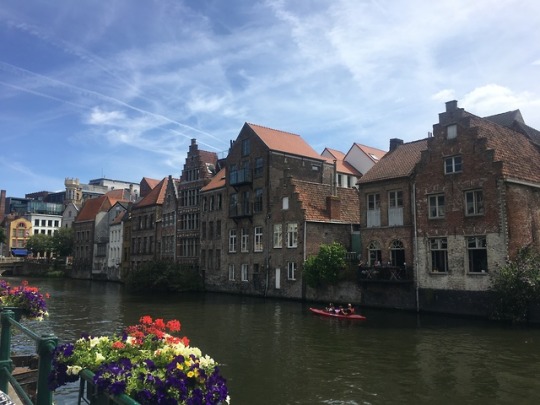
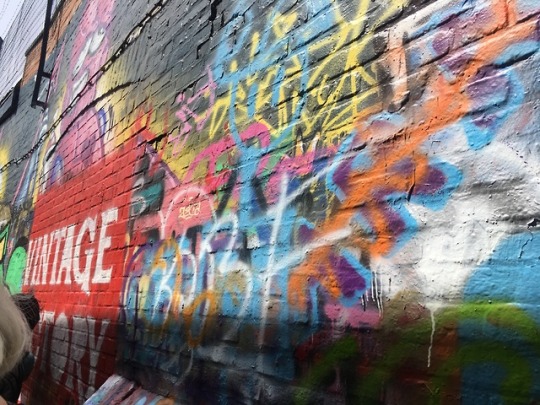

Day twenty-two,
We visited a catholic church that had decorations, statues, paintings, candles, and this made it different from any church we’ve been to. It truly exemplified the concept of “exuberance” we talked about in lecture on July 15th.
The city of Ghent dates back to Roman times. Most people who lived in Ghent were active in industry and they were able to build up the city with the money they got from production because Ghent was a big exporter of textiles during that time period. Their ability to produce and export materials allowed Ghent to transform into an economically self-supportive large city. The first building we saw was the merchants hall, where they would sell products and host meetings for economic business. This building was the essence of economic life in Ghent and it had a tower so that visitors could immediately see the importance of the city.
There were two parts of the city hall building, a gothic and renaissance part. Ghent had an abundance of money and were able to renovate part of the building but they eventually had to stop the renovation at the beginning of the 16th century because they ran out of money. Fortunately, to this day we are still able to see the gothic style architecture due to this lack of funds. They started building the second part of the building the renaissance part at the end of the16th century which gave it a renaissance flare.
The harbor from Ghent was at the economic center of the city since the Middle Ages. Everything was linked to shipping, including high class art, specifically paintings by Jan van Eyke. Near the harbor was a building from the 13th century that was used to store the grains for people in Ghent. The key to political power lied in that building because if you had control over the consumption, you could essentially control the masses.
We were also able to see the real Adoration of the Lamb painting by van Eyke. The stolen piece is still in fact missing, and there are many conspiracy theories as to who might have it.
Lastly, we had a home visit with a Belgian host family where we were able to immerse ourselves in authentic Belgian cuisine and conversation. Dominique, our host, said that people in the Netherlands think the Belgians “make a mess out of their houses”. I thought it was interesting that she mentioned this because We had talked about this in lecture and how the Netherlands has lots of rules and regulations when it comes to building houses but Belgium does not. The lack of rules and regulations allowed Belgians to make unique and personal houses according to their wants and desires.
Till next time,
Bri
0 notes
Photo




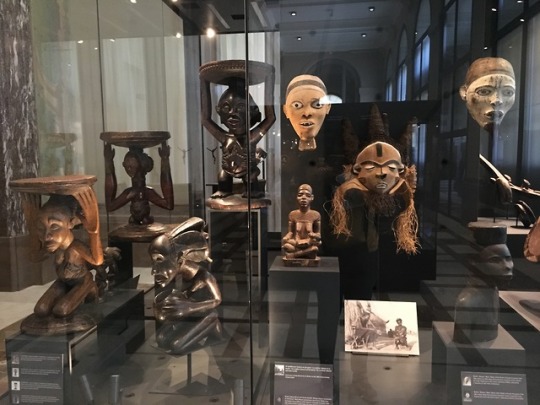

Day nineteen,
Word of the day: zie u graag
Definition: I love you; I really want to see you
We learned about the history of Belgium in central Africa, specifically the Congo, in lecture today. It seems like the colonial mindset was embedded within the European identity. There were multiple European states that wanted to go to these other countries and take advantage of their populations.
Leopold II has a long and destructive history in the Congo region in Africa. He wanted to have a colony of his own, and since the Congo had not yet been colonized it was the perfect region for him to colonize. Religion also played a role in the reasoning for colonization. They wanted to spread Christianity and make these regions more “civilized”. In fact, missionary workers were the first to report the horrors happening in the Congo.
While bringing “progress” to Africa in the form of healthcare and education, the Belgians were also exploiting their resources and mutilating their people. All of this “help” was done with a colonial mindset because the Belgians and Europeans in general viewed the Congolese as inferior beings. The Belgians created a relationship of co-dependence, they needed the Congolese region for its natural resources and the Congolese people used the Belgians for advancements in education, medicine, etc. I would be interested to hear this history from the perspective of those directly impacted by this colonization, such as those who lived in Congo during this time or their descendents because history is oftentimes told through a very whitewashed perspective.
We also visited the Royal Museum for Central Africa today. This museum was originally used as a tool for colonial expansion when the Congo region was a colony of Belgium. This museum had an underlying political message and was used as colonial propaganda, down to its architectural makeup as shown in the double L’s in the ceiling for Leopold II. The museum was not renovated for most of its history and the old colonial images of Africa were perpetuated through the museum. This is also shown today through the images of Africans displayed in the media that only focus on suffering and disease, not the modern advancements they continue to make.
The section curated by Hein Vanhee in this royal museum was broken up into different sections that follow the life course go through from their birth to their death. My favorite part of the museum was the ability to listen to the actual voices of Congolese people in this particular exhibition. I'm glad we were all able to hear from Primrose Ntumba and the voices of those in the diaspora because listening to the voices of those impacted by these tragic histories warrants a high level of importance.
Till next time,
Bri
0 notes
Photo
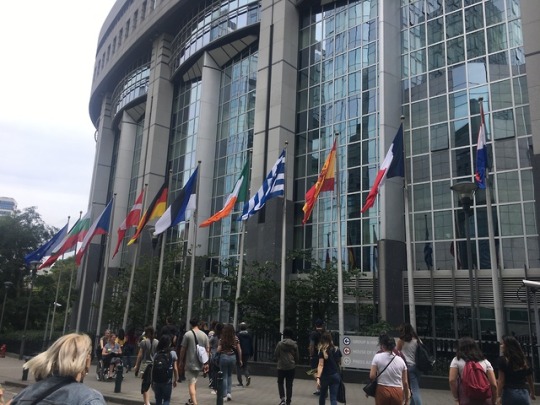



Day eighteen,
Word of the day: boterham
Definition: a slice of bread
In lecture today we learned about the six main European institutions that make up the European Union: the European Commission, the European Parliament, the Council of the European Union, the European Council, the European Court of Justice, the European Central Bank. The European Union is composed of 28 member states that are each able to preserve their individual sovereignties. Today, there are 24 official languages of the European Union which shows the cultural and linguistic diversity of Europe. All official documents are translated into 24 languages, and this shows the multilingualism of the European Union.
Prior to the development of these institutions and the European Union, there was a movement to unite these European countries. The Pan-European movement advocated for a peaceful and voluntary union of the European countries. Some people who wanted a peaceful union of these countries were Marquis de Lafayette and Immanuel Kant. The idea of the European Union as a federation grew stronger after the second World War and many people wanted to model this coalition of countries after the system in America. One of the people who advocated for peace after Nazi Germany was Jean Monnet, who wrote about the future of Europe as “the European States must constitute themselves into a federation” (1943).
We visited the European Parliament today and this Parliament approves or disapproves laws that have been proposed by the European Commission. It is composed of 766 members who belong to various political parties. These political parties vary across the entire political spectrum, with most of the current members being apart of the Group of the European People’s Party (Christian Democrats). There is a difference between representation among large and small member states because smaller countries have less members in Parliament. The members of Parliament are democratically elected every 5 years.
We also went to the House of European History and this museum was broken up into different exhibitions focusing on various points in time in the history of Europe. In one of the beginning exhibitions, there was an audio recordings that said in the 1900s, the Netherlands and Belgium were two of the six nations that “controlled about half of the total land service of the Earth”. All of the six nations were in Europe, which is unsurprising given its long history of colonialism, but I was surprised that the Low Countries in particular played such a big role in this. This museum also had a section on scientific racism and eugenics, two topics that are oftentimes not widely spoken about.
Till next time,
Bri
0 notes
Photo
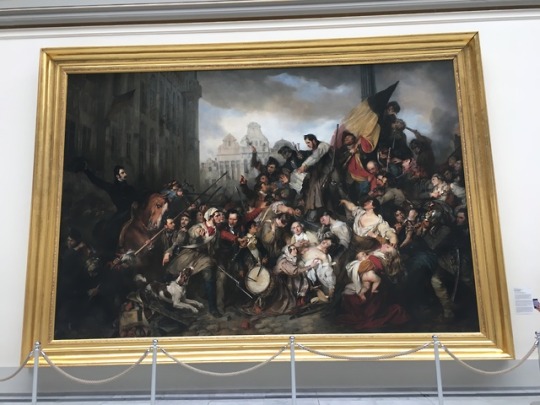



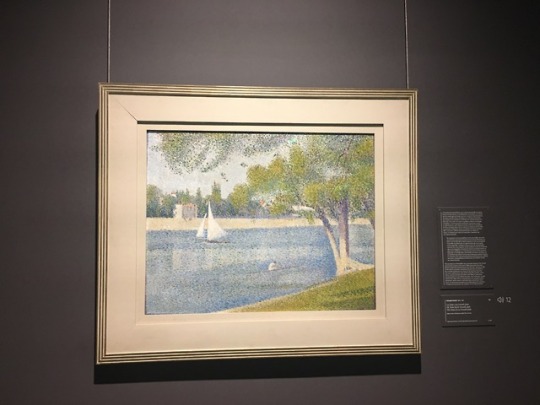
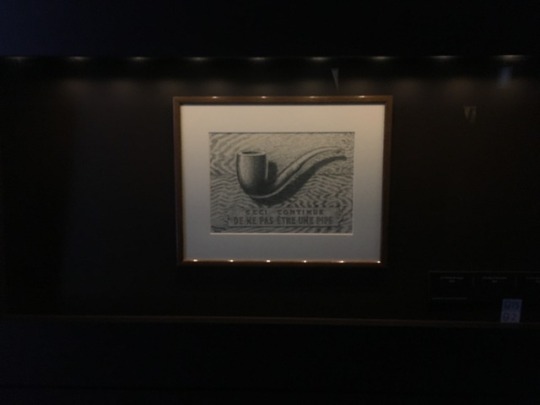


Day seventeen,
Word of the day: plezant
Definition: pleasant, fun, nice
In lecture today we learned about the history of art and culture in Belgium. Bruges and Ghent have historically been wealthy cities in Flanders because they were the sites of the production of luxury textiles. These cities achieved autonomy and produced liberties. There has been a long history of the conflict associated with these liberties because Maximillian of Austria, husband of Mary of Burgundy, the female successor of Charles the Bold did not want to respect these cities liberties. Maximillian wanted to break the power of the cities in Flanders in order to not have to respect the liberties of these cities. This led to Bruges remaining a medieval city because they didn’t have enough money to modernize the area, and this also made Antwerp the largest sea port in the low countries. Brussels became the administrative capital of the low countries.
Painting in the Middle Ages for the Italians focused on creating an illusion of beauty but Flemish painters painted in a much more realistic way. They didn’t want to idealize the reality but rather show how life really is in the low countries. This relates to the quote in the reader about Jan van Eyke that reads “It is perhaps not by chance that the Flemish Primitives, with Jan van Eyke as their greatest representative, pioneered a style of hyper-realist painting that was in complete contrast to the idealized art of the Italian Renaissance” (p. xix). Jan van Eyke was one of the most famous flemish painters during the 15th century and he was known for painting tiny details, portraiture, and textiles. Painting in the 16th century was dominated by Pieter Brugel, who was known for painting ordinary people and how they celebrated life. We were able to see some of his works in the Royal Museums of Fine Arts of Belgium today. One painting in particular stood out to me (pictured above) because at first glance it appears to be a typical happy winter setting, but upon further analysis you can see that this is actually a massacre scene. Art flourished in Brussels in the 19th century, specifically in the form of modern art and the rise of a new form of architecture called Art Nouveau.
After World War I, surrealism began to become more popular in the low countries. One of the most well known surrealist painters is Rene Magritte. Magritte used painting as a way to escape his harsh reality and to move to the world of his dreams. There was an exhibition in the museum of some of his works. Unfortunately, the original “The Treachery of Images” painting was not there, but we were still able to see some of his other works such as “The Listening Room” and “Black Magic”. Magritte’s ability to play with visual perception is unmatched.
Till next time,
Bri
0 notes
Photo






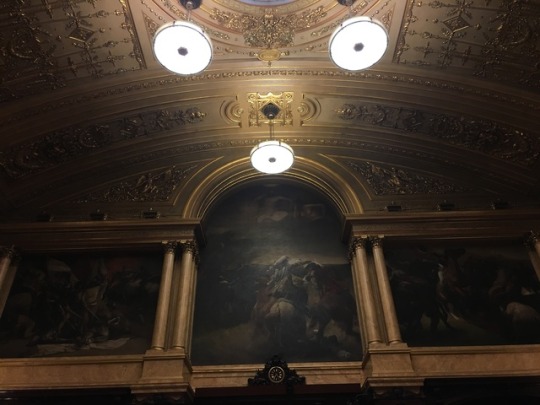
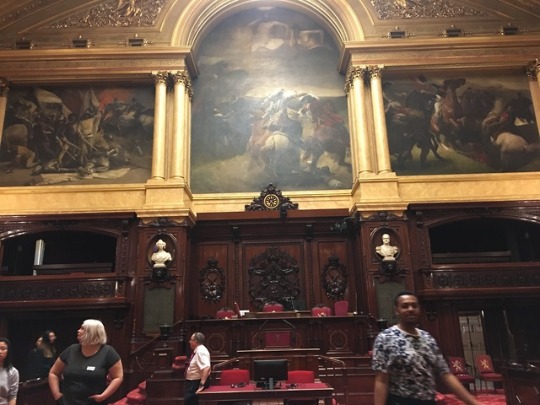
Day sixteen,
Word of the day: allee
Definition: to go; a cry for encouragement; come on
In lecture today we continued to learn about the history of Belgium, and we also discussed the structure of the Belgian parliament. We continued to talk about the two major challenges Belgian society faces today: social inequality and linguistic discrimination. The linguistic discrimination is shown in the fact that Belgium is divided into three regions: Dutch-speaking Flanders, Dutch and French speaking Brussels, and French-speaking Walllonia. There are essentially two nations living in one country so that provides a linguistic struggle in itself.
The following quote relates to the linguistic struggle occurring in Flanders, “August Vermeylen, the leading intellectual behind the Flemish Movement at the time, coined the well-known phrase: “We wish to be Flemings in order to be good Europeans” (p. 228). This quote relates to the discussion we had in class about the those involved in the Flemish Movement reclaiming their voice and identity in an attempt to make Dutch the dominant language spoken in that region again.
In the mid 19th century, Belgium faced numerous major problems with regards to illiteracy, alcoholism, and generational poverty. Belgium has a history of inequality within the political sphere because during the mid-19th century, only the wealthy had the right to vote and elect members to Parliament to have their voices heard. This presented a problem for the majority of the population that lived in extreme poverty due to industrialization. Industrialization was a double-edged sword for the Belgians. In the beginning, it provided an abundance of wealth for the South, but this income influx of money ended when globalization occurred and Belgium no longer had a monopoly on the steel industry. Men and women alike were paid lower wages and children were even employed in order for the steel industry to try to remain afloat.
The 19th century Belgian political ideology was characterized by Socialism. Belgium became the center of the socialist movement in Europe and workers unions developed in order to organize change. The workers union attempted to change the voting system in order for everyone to have the right to vote, not just the wealthy 2% elite. By the end of world war II all citizens were allowed one vote. The socialist movement had strong support in the South because that is the site of industrialization.
Lecture today showed me that there are many parallels between Belgian and American society. As we talked about in lecture yesterday, the school system reproduces inequality in both Belgian and American society.
The current political structure of Belgium is both regional and federal. Belgium is divided into two regions where each can decide their own policy using their own Parliaments. Today we visited the Flemish and Belgian Federal Parliament. The Parliament was built right across from the Royal palace which symbolizes the limited power the crown actually has because the king has to obey the Belgium constitution and Parliament. The Federal Parliament, royal family, and Belgian flag are all supported by both regions but education, language, economic policy differ by region.
During the walking tour of the Flemish Parliament building we learned that there are 124 members of parliament made up of coalitions of different parties. Different parties form the majority, so one single party will never have full control of the government. This system sounds very similar to the Netherlands government structure.
My favorite part of the tour was the room with the elements of transparency and solidity. The transparency is shown in the glass ceiling and the solidity is expressed through the structural pillars for the building. Artwork is woven throughout the entire Flemish parliamentary building, as shown in each room having the name of a famous Flemish painter (i.e. Jan Van Eyke), and the wire artwork that makes words when a spotlight is placed on it.
It’s interesting to be in the city that is holding the country of Belgium together because without Brussels, Belgium would likely split into the Dutch-Speaking Flanders and French-speaking Wallonia.
Till next time,
Bri
0 notes
Photo

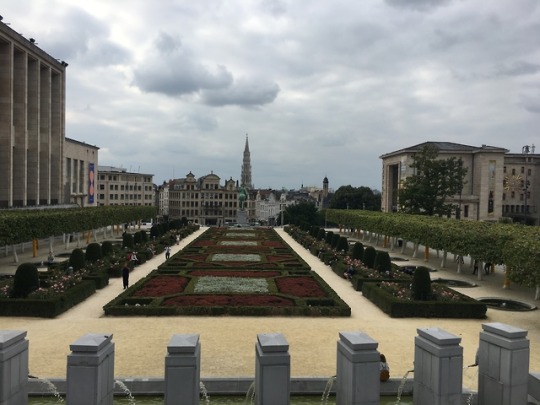





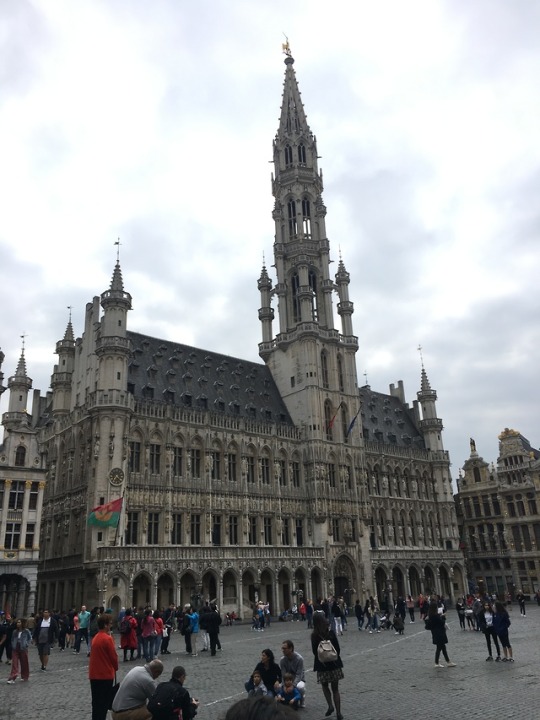

Day fifteen,
In lecture today we learned about Belgium’s history as an independent nation. Belgium has been an independent nation since 1830 so it is a very young country. During their fight for independence, the French attempted to conquer then Spanish Netherlands and bombed Brussels in retaliation when they failed. This bombing destroyed parts of the city of Brussels, and the city lost some of its medieval characteristics. The Germans also presented a threat to this new nation because they wanted to occupy Belgium due to their ability to have nearly direct access to France through Belgium’s borders.
Before the fight for Belgian independence, the entirety of the Netherlands, including present day Belgium and Luxembourg, was reunited after almost 300 years. This reunification didn’t last long because a revolution began in the South where they fought to become an independent nation. The French speaking southern Netherlands was very much in favor of starting a revolution against the unification of the Netherlands because they were fearful that they would become a tiny French-speaking minority among the larger Dutch-speaking part of the country. The unification of the Netherlands, Belgium, and Luxembourg did not succeed because each nation had their own individual mentality in regards to religious ideology, biases, and language preferences.
Both the Netherlands and Belgium wanted a monarchy because they wanted someone to unite their individual nations and give them stability. The first monarch of Belgium was Leopold II of Sax Coburg, originally from Germany. It’s interesting to me that the Belgians would willingly allow someone of German descent to rule over their nation given the contentious history these two nations have with one another.
After Belgium became an independent nation, they embraced industrialization where steel factories wealth to the French elite in the South. These elite then moved to Brussels and wanted to model the city after Paris so they built big avenues, galleries, gardens, a Basilica, and arches. The wealthy invested into Brussels in order to modernize the area. One of these investments is shown in the steel house that gave the illusion of Belgium as a wealthy nation. We were also able to see the Paris-inspired gallery and garden on the walking tour around Brussels.
We learned that there are two main challenges that Belgium society faces today: social inequality and linguistic discrimination. One of the social inequality challenges Belgium faces is the school system. The education system is a cite for the reproduction of inequality in Belgian society because they have to prove they are worthy of college at age 12. Those who are not given an equal footing during childhood, (i.e. not able to go to preschool) are automatically at a disadvantage when it comes to proving their intelligence at such a young age. Another component of this challenge is the fact that wealthy families move out of Brussels to smaller towns, which in turn makes Brussels a poorer city. This is similar to white flight in America that leaves Black and Brown communities more susceptible to increased rates of unemployment, crime, and low educational attainment rates. It makes it very difficult for Moroccan and Turkish communities in Belgium, and Black and Brown communities in America to make it out of these conditions.
Till next time,
Bri
0 notes
Photo
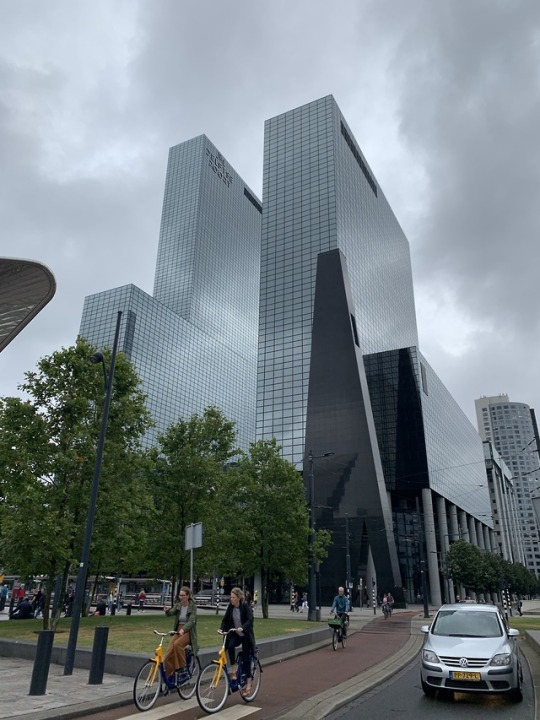

Day twelve,
Today we visited the city of Rotterdam where we had a walking tour around the area. Most of the buildings we saw today in Rotterdam were relatively new developments because of the bombing by the Germans that occurred on May 14th, 1940 during World War II. According to lecture, the Queen and important government officials escaped to live in exile in London just a day before the bombing, and the Germans invaded the Netherlands three days before the bombing. This fast turn of events left the entirely of the country vulnerable, and the Germans took advantage by bombing Rotterdam and threatening to bomb Utrecht next if they did not surrender. The bombing killed about 900 civilians, and 25,000 homes were destroyed. The city center was completely destroyed by the bombing and Rotterdam as they knew it up until the 20th century was no longer there.
Even though the city was bombed and burned to the ground, history still remained under the surface. I was able to see some of the artifacts that were dug up from Rotterdam during the medieval times and the Golden Age. These artifacts allowed me to take a peek into life in Rotterdam during the past and these images dramatically contrasted with what we saw on the walking tour.
We first went to the Markt Hal, which is also known as the retail cathedral and the cornucopia. All of these names are accurate because this building is filled with an endless number of eateries to choose from. It was shocking that the windows inside of the Markt Hal are actually from apartments located on the outside edges of the building. This is an efficient utilization of space and goes to show how far modern architecture has come.
We then traveled to visit the cube houses where the tour guide told us that each house represents a tree which is why the Dutch call that area the “Blaak Forest”. These houses are so stunning in an odd way because it’s hard to imagine how someone could live in a house that’s so tilted.
Rotterdam is home to the biggest harbor in all of Europe, and further exemplifies the importance of trading had in the economic development of the Netherlands. The effective use of water to their advantage for things such as transportation, trading and agriculture is what has set the Netherlands apart from their neighboring countries for centuries.
This city has a way of making artwork through architecture, as shown in the bridge that resembles a swan, and the Markt Hal. It’s interesting to me that they chose to go so modern architecturally after the bombing because it contrasts so drastically with the architecture found throughout the rest of the Netherlands. As I said in the last blog, each city in the Netherlands has something unique to offer, and for Rotterdam that seems to be a take on modern architecture.
Till next time,
Bri
0 notes
Photo

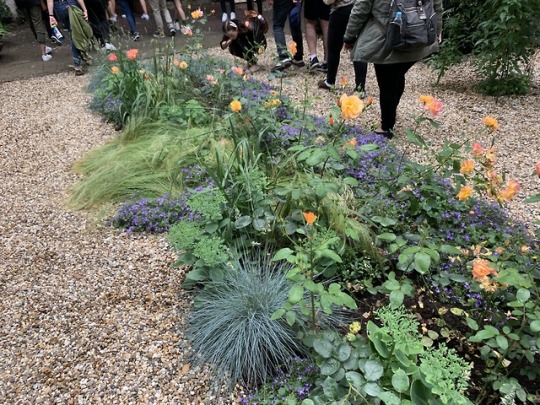
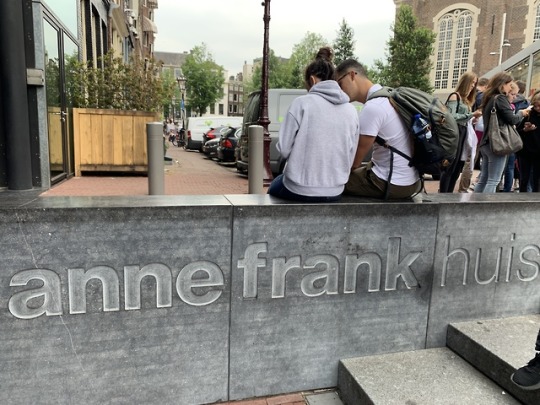

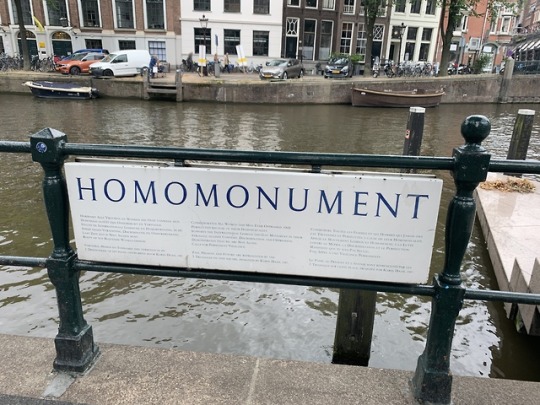
Day eleven,
Today we stayed in Amsterdam and had a tour of the Anne Frank house. We were able to step foot into a private garden where most visitors aren’t allowed to enter and from there we were able to see the annex Anne and her family hid in for just over two years. We were also able to see who could possibly see into that annex, and since there is speculation of who betrayed the family, this is a very special circumstance that most people will never get the chance to experience. The roses pictured above were planted in commemoration of Anne Frank.
The Netherlands played a bigger role in the Holocaust than most people know. The Dutch assisted in the facilitation of the transportation of Jews, betrayed them by outing them to the Gestapo, and remained obedient and law-abiding during the Nazi Occupation of the Netherlands. We were reminded of this dark history during lecture today as well as during the debrief session after the tour of the Anne Frank house.
The first item Anne packed to bring with her to the hiding place was a diary and she even said “memories mean more to me than dresses”. This idea that she wanted to document her memories for not only herself, but also for future generations to come is heartbreaking and touching all at the same time. The quote from the reader “Her diary became one of the canonical texts of the twentieth century, because of the literary quality that brought the hiding to life, but also because it was felt to address the universal drama of persecution and human dignity” accurately explains the impact Anne Frank’s diary has had on the world. (p. 153)
The eight hiding in the attic don’t even represent one dot on the map pictured above. This was one of the most impactful parts of the museum for me because it opened my eyes to just how many people were targeted on the basis of their religious identity.
The Dutch paying reparations to the survivors and descendants of survivors of the Holocaust is the first step towards repairing the damage they’ve caused, but much more needs to be done in order to make up for the tragedy of the Holocaust.
In the video shown in one of the last rooms of the museum, Shimon Perez said “it’s not a memory, it’s a warning”. This is so important to remember because things like this have happened and continue to happen throughout the world. It’s not enough for us to look back into history and think something like the Holocaust could never happen today, because that just isn’t true.
It was interesting that the Head of Educational Projects of the Anne Frank House, Jan Erik Dubbelman, mentioned the killing of Ans Van Dike and how that related to anti-gay prejudice. According to Dubbelman, her murder was an attempt to restore the moral order in the Netherlands after the war because she betrayed her fellow Jews and was a lesbian. This side of the story is oftentimes not openly talked about, so I appreciated him prompting a discussion about it. This further proves that the intersection of oppressed identities can make someone even more vulnerable to being taken advantage of.
Till next time,
Bri
0 notes
Photo





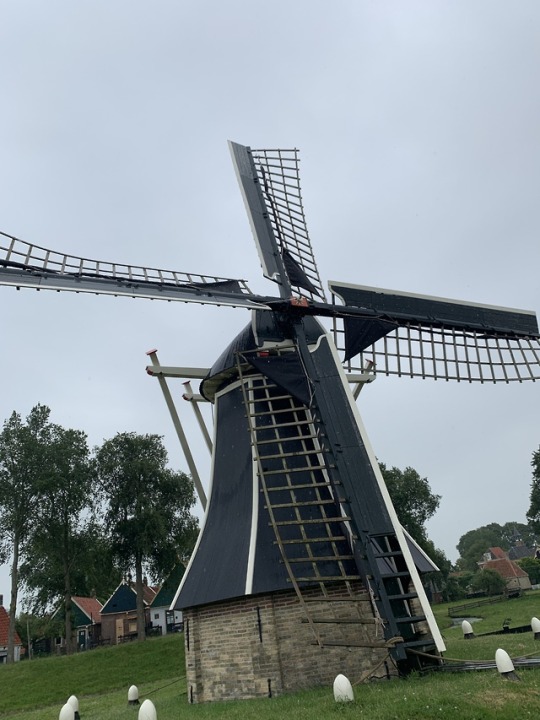

Day ten,
Today we took a ferry ride to the city of Enkhuizen and walked around the open air Zuiderzeemuseum. Unfortunately it was raining, but the city had beautiful views of the water and was very green. We walked around the museum and were able to enter the homes that were staffed with actors and sound/visual effects. The houses were set up and decorated just as a Dutch house during the 17th to early 20th century would have been, so it was interesting to see what life could have been like living in the Netherlands during that time.
We were able to walk around the city after the museum and it is very different from Amsterdam, Delft, and Utrecht. Each city has something unique to offer. This city in particular is very quiet and laid back, which contrasts with the hustle and bustle of Amsterdam. It would be nice to visit Enkhuizen and the Zuiderzeemuseum again when the weather is sunny and free of rain.
We got the chance to see a windmill called “Leeg De Polder” that took the water out of a small pond with a polder contraption that could spin a large screw that would then push the water out of the pond into a metal tin. The purpose of these polders were to regulate the water level in the surrounding area. This was an interactive part of the museum so I was able to try to push the water out of the pond first hand. The caption of this polder talked about how the land can be inhabitable due to a buildup of rainwater that causes marshy land in this area and read “And before the steam engine was invented, the Dutch kept their feet dry by draining the land with windmills”. We talked about the use of windmills for water level regulation in lecture on July 4th so it was nice to see how it works in person.
This city provided an embodiment of the stereotypical Dutch characteristics I was expecting to see before coming to the Netherlands: windmills, clogs, and water. These are shown in the images of the Netherlands that the tourist industry portrays, as we discussed in lecture on July 2nd. This perception contrasts with the images the media portrays of the Red Light District and the use of soft drugs. This just goes to prove that the Netherlands is a culturally and environmentally diverse nation.
Till next time,
Bri
0 notes
Photo






Day nine,
Today we traveled to the Hague and had the chance to visit the Parliamentary buildings and Museum Mauritshuis. In lecture yesterday we talked about the Dutch political system, role of the king, the electoral system, formation of the government, and the various political parties. The following quote is taken from the reader and supports what was said in lecture about the Netherlands currently being a divided nation between the conservative and liberal coalitions; “...the pendulum has swung to the other side, creating a political commotion that hinders the peaceful accommodation of the conflicts of the twenty-first century” (p. 43). The political spectrum is divided between the liberal parties, social parties, confessionalist parties, and one issue parties so it would be very difficult for one party to dominate the entire parliament, as shown in the quote “A need to negotiate and to compromise is structurally embedded in politics, since no political party is likely to achieve an absolute majority.” (p. 288).
The Hall of knights is the oldest building in the Hague. It was first used as a hunting castled, and then it was turned into a building used for court hearings. It is now used for the King’s yearly address and various foreign and Parliamentary affairs. The Hall of Knights has a large constitution of 1848 hanging in the main room because this document marked the beginning of a Dutch parliamentary democracy. As the King sits on his throne to give his address, those in the room are reminded of the reality that the King no longer has absolute power due to the presence of ministerial responsibility as described in the constitution.
We also stopped and saw a statue of Queen Wilhemena, the mother of the fatherland. The statue is faceless with engraving behind it that translates to “Lonely but not alone”. This quote exemplifies her endearing spirit because even though she lived in exile, she managed to maintain contact with the Dutch through radio orange. The faceless statue is meant to show that she was more than just an individual, and the main point is to keep her spirit alive.
We also had a language session today in which the speaker told us about how the Dutch are worried about a decline in the use of Dutch throughout the low countries and abroad.
We went to the museum Mauritshuis where we were able to see famous works by artists such as Vermeer and Rembrandt. There was one painting in particular that stood out to me because it had palm trees, Black people, and was set on an island. All three of these visualizations were not typical for a Dutch painter during that time. I also thought the flower painting was unique because usually bouquets are set against a solid background, but this one in particular was set against a realistic landscape background.
Till next time,
Bri
0 notes
Photo

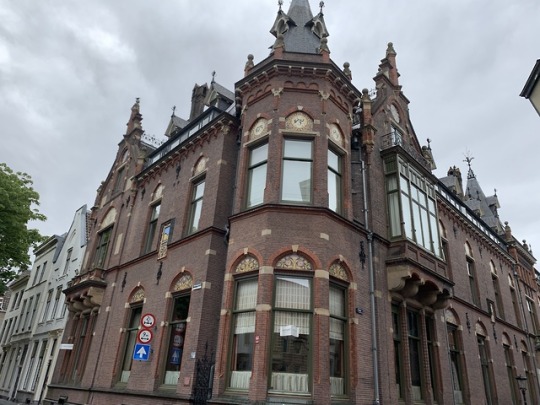





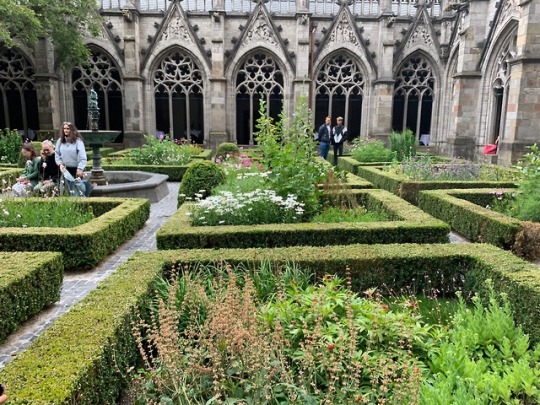


Day eight,
Word of the day: Vitwaaien
Definition: to clear one’s head, go outside, blow out
We visited Utrecht today and had a walking tour around the city. You can see traces of red and white throughout the city of Utrecht since those are the city’s colors. We saw a french gothic style church that resembled the picture of a gothic church from lecture on July 3rd. This was a Catholic turned Protestant church so all of the memorabilia that resembled Catholicism was torn down or defaced. Most of the stained glass was removed and it is evident that the traditional catholic paintings and architecture have been removed or plastered over. Faces were quite literally removed on the statues that remained in the church. This church was the most intense and extreme example of the effects of the Reformation I’ve seen thus far.
The tour guide made it a point to let us know that the Dutch are very thrifty and economically conscious individuals. She pointed out the removal of windows in a building as well as the Dutch style of lamp that allows them to use one lamp to serve two purposes, lighting for the outside of the house and the inside. The Dutch are “zuinig”, a word we learned in lecture on July 2nd that translates to “thrifty”, economical, or careful. The tour guide was also very eigenwijs, or opinionated. She didn’t hesitate to express her disdain with the Spanish when talking about a painting we passed by on the walking tour.
A quote from the reader reads “Therefore the Union of Utrecht of 1579, which bound the rebel provinces together in their struggle against Spain and later came to be seen as the Dutch constitution, famously granted freedom of conscience to all Dutch men and women” (p.116). This quote proves that Utrecht played a big role in the reformation and further explains why the tour guide pointed out so many places where churches used to stand tall.
“To that end, all existing Catholic church buildings were either handed over to the Calvanists, or confiscated by the local authorities and converted into hospitals, university lecture halls, or simply left to decay” (p.116). This quote echoes what the tour guide said about how a church can essentially be turned into anything. The colors of brick indicated where churches used to be in the city, so we were able to enter a church that was still standing as well as see where churches used to be in the past.
The wide canals were used for 12th and 13th century trading according to the tour guide. Utrecht thought they were in the middle of Germany and Scandanavia.
The monument in the church had babies and skull surrounding the man at rest which are symbolic for life and death. These appear to be recurring symbols throughout many Dutch paintings and sculptures.
Till next time,
Bri
0 notes
Photo

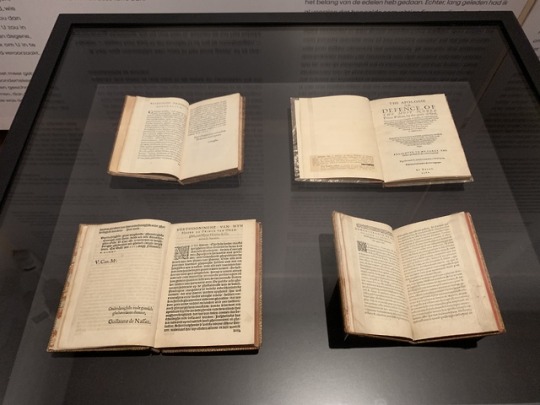





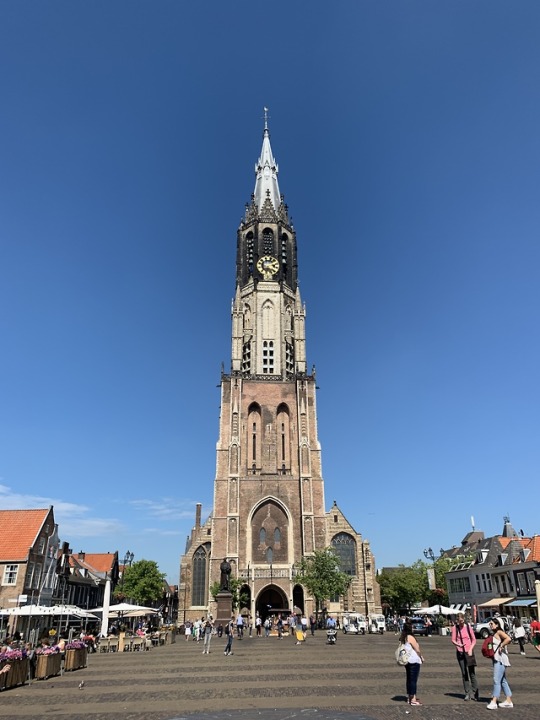

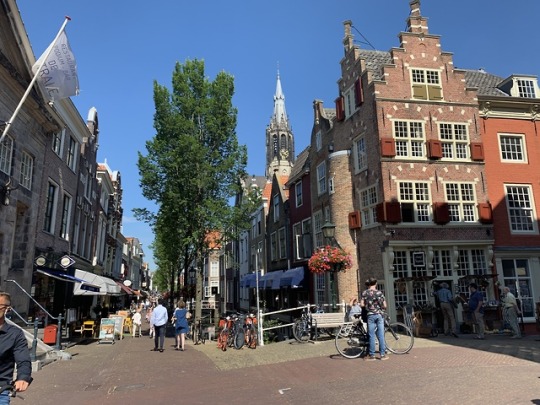
Day five,
Word of the day: Biertje
Definition: small beer
Today’s lecture was a Dutch Language Session in which we learned things like Dutch Greetings, how to start a conversation, and how to say please and thank you. We also traveled to Delft and went to the Museum Prinsenhof Delft as well as the Old and New churches in Delft.
In the museum I was able to see the pistol William the Orange was shot with as well as the bullet holes that were left in the wall after the assassination. We were also able to walk through the entire museum and see exactly where William the Orange and his family lived. William the Orange is an important historical figure for the Netherlands in part because he was one of the main proponents of promoting religious freedom at the time. A caption from the “William the Silent’s Defence: the Apology” part of the museum read “According to William, disloyalty was acceptable because Phillip II was behaving like a tyrant and harming his people. He would not allow his people freedom of religion”. Independence from the Spanish was linked to religious freedom in his eyes. This history relates to the quote from the reader “Here lies the origins of the so-called “Orange Myth” which holds that the Oranges are protectors of freedom and act in service of the people” because the color orange in the Netherlands has continued to be a symbolic representation of William the Orange’s legacy (p. 24). His idea of creating a society built upon tolerance of religious differences can be used as one of the explanations as to why the Netherlands is as tolerant of religious differences as it is today. William the Orange’s push for religious freedom was controversial among Protestants who didn’t approve of religious freedom and catholics who did not approve of the revolt against the Spanish.
The painting pictured above named the “Allegory on the Virtues of William the Silent” has various metaphorical and symbolic figures to represent William the Silent’s life and death. There is a devil firing what appears to be a pistol over William the Silent’s deathbed on the left side of the painting. This likely is symbolic of his assassination in 1584. Some of the symbolism in this painting are reminiscent of the paintings we discussed in lecture on Wednesday, such as the fact that the angel babies likely represent all of the babies that died during childbirth or shortly after due to the lack of health advancements at the time.
We also went to the Old and New church where Jan Vermeer and William the Orange were buried. The Old Church looked like a catholic church turned Protestant because the walls were all plain but there was still stained glass all along the windows.
Till next time,
Bri
0 notes
Photo



Day one,
Today we went to the Van Gogh Museum where we were able to view a large amount of Vincent Van Gogh’s collection of paintings. It was interesting to see that a majority of his paintings were done during a relatively short period of time, over the course of about 3 or so years. I was able to listen to voice recordings of letters written from Van Gogh to his brother Theo and from other artists to Van Gogh. This helped to put into perspective the impact he had on those around him as a family member and friend.
Vincent Van Gogh was a multidimensional artist who beautifully painted the female body, portraits of peasants, self portraits, landscapes, flowers, and more. Van Gohn’s impact on the culture of art extends far beyond many other artists of his time. The walk through the museum helped to give his life a whole new meaning because we were able to see how he had a profound influence on many of the artists who came after him. You can see changes in his use of certain colors over the course of his years as a painter, and the choice of these colors were probably the result of his inner dialogue, thoughts, and feelings. Van Gogh’s The Potato Eaters painted in 1885 offers a realistic perspective of the life of a Dutch peasant family during that time period.
Van Gogh was even mentioned on the canal ride we took later in the day where a recording said he only sold one painting during his lifetime and he was not famous at all. This reminded me of an audio taped recording I listened to at the museum of a letter Vincent Van Gogh wrote to his brother Theo that practically said to be an artist is to work tirelessly, even allowing it to take a toll on your health and not even getting the chance to reap the benefits of being an artist while you’re alive. This audiotape echoed what Chislain Kieft said in their paper “The Making of Rembrandt and Van Gogh”. Kieft said “... that the true artist is poor and successful only after death: this romantic cliche of an artist was not an invention of Van Gogh”. This quote along with the recording both offer a sad perspective of the life of an artist during that time period and help to give context as to how Van Gogh could have been feeling within the larger society at the time.
Till next time,
Bri
1 note
·
View note